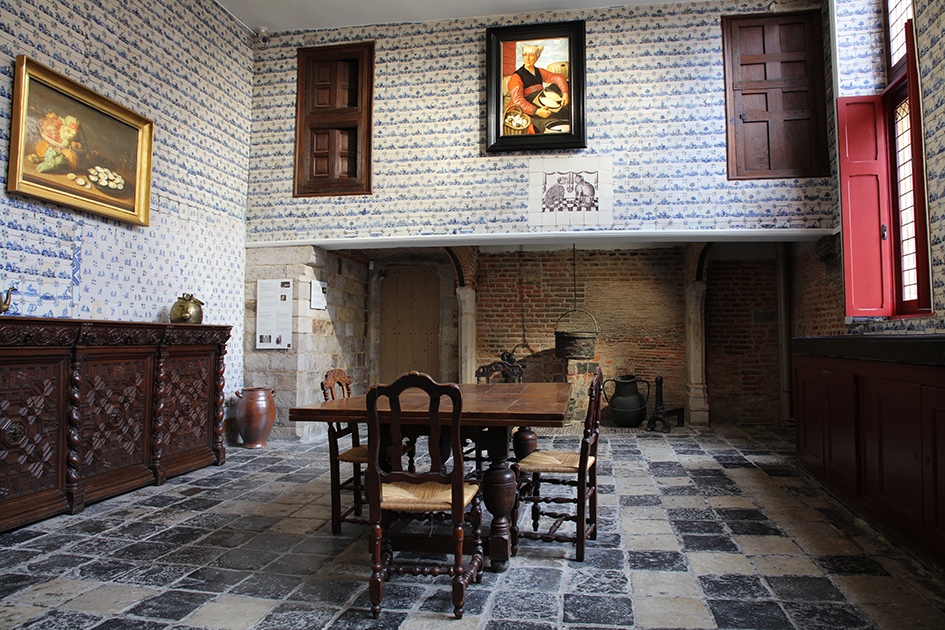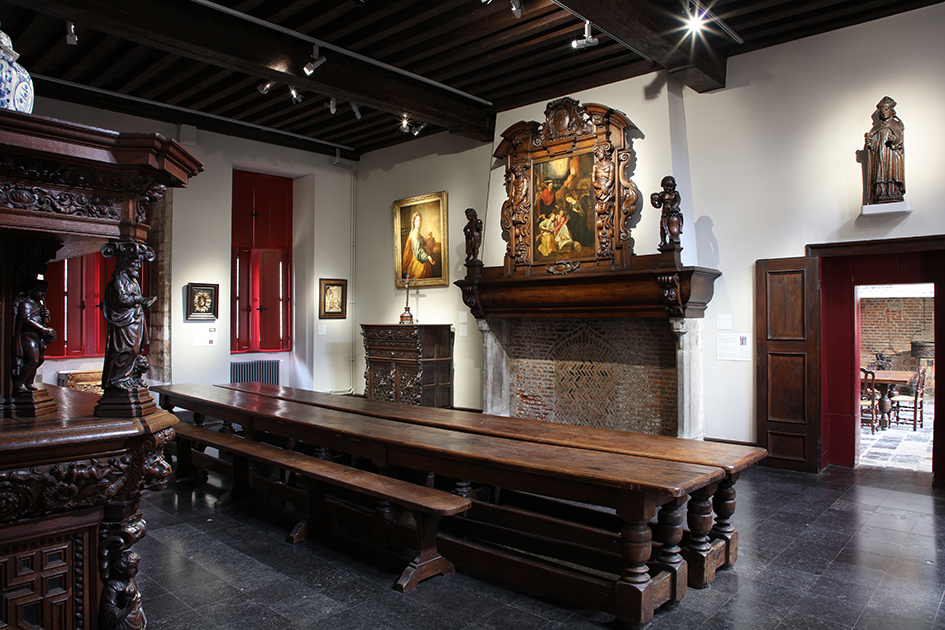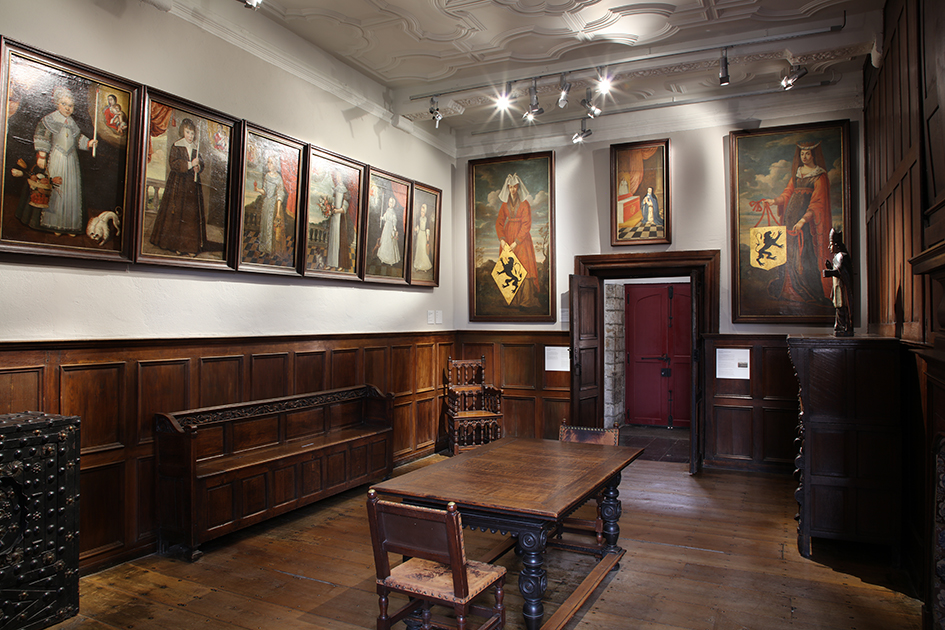An iconic heritage site in Lille, this former hospital of medieval origin houses the city's art and history museum. In the heart of Old Lille, colourful architecture, atmospheric rooms and works of art invite you to travel back in time to the life of 17th and 18th century Lille.
A glimpse of Lille's heritage
Located in the historic heart of Lille and founded in 1237 by Comtesse Jeanne de Flandre (Jeanne of Flanders), the Hospice Comtesse, formerly the Notre-Dame Hospital, welcomed the sick and pilgrims. Its foundation was part of a large movement to create hospital asylums which multiplied during the 12th and 13th centuries. These walls now house the city's museum of art and history. And it is the history of this iconic heritage, one of the last testimonies of the Counts of Flanders in the city of Lille, that you are told as soon as you step through the entrance porch.
First of all, the main courtyard of this former medieval hospital offers a panorama of the art of building in Lille from the 15th to the 18th century. Rebuilt, extended and gradually modified, the present establishment is the product of more than five hundred years of occupations, adaptations and various destructions due in particular to two fires, one in 1468 and one in 1649. The present four buildings were erected between 1470 and 1724. The brick, stone and sandstone used in their construction give the facades a polychrome appearance characteristic of the civil architecture of Lille.
The sickroom, rebuilt after the fire of 1468, consists of a single nave covered by a panelled barrel-vaulted roof. Each patient was provided with a bed and a wooden niche with a shelf, which served as a bedside table and was carved into the walls.
The chapel, built as an extension in the 17th century, allowed the nuns who cared for and comforted the sick to follow the services. Its ceiling is decorated with 66 coats of arms painted in 1853.
After the French Revolution, the Hôpital Comtesse buildings were used to house orphans such as "Les Bleuets" and the elderly and infirm, "Les Vieux-Hommes". In 1940, the Hospice Comtesse's vocation as a hospital and caregiver came to an end. Although the buildings of the Hospice Comtesse have been classified as Historic Monuments since 1923, it was not until the 1950s that the municipality decided to turn them into a museum of regional history and ethnography. In 1962, the Hospice Comtesse Museum was established and an atmospheric display was installed on the ground floor of the community building.
A leap into the history of Lille
After exploring the sick room, the chapel and the physic garden, you enter the community house of the Augustinian nuns who were responsible for the care of the sick. Several atmospheric rooms including the kitchen, refectory and linen room follow one another and are reminiscent of both the hospitality and the intimacy of a Flemish house from centuries past. While the refectory with its exuberantly decorated furniture recreates the solemn atmosphere of the former hospital, the kitchen with its countless blue tiles brings the day-to-day life of the place to life.
On the first floor, you can find out about the history of Lille and the life of the city. The collections on display in the former nuns' dormitory paint a portrait of Lille from the 16th century to the French Revolution. Woodcarvings, paintings and illustrated documents describe the urban landscape of Lille over several hundred years; the portrait galleries depicting the Counts of Flanders and the Dukes of Burgundy and the keys to the city highlight the historical and political context of Lille over the centuries. The major trade guilds that recall the city's merchant past are illustrated by traditional objects such as banners and by the painting La Procession de Lille by François Watteau. This artist's works, and those of his father, Louis Watteau, provide valuable evidence of the city and life in Lille under the Ancien Régime.
At the end of the tour, the two superb globes, celestial and terrestrial, by the Venetian cartographer Vincenzo Coronelli, evoke the enthusiasm for travel and scientific discoveries of the 17th and 18th centuries.
The Hospice Comtesse Museum is rooted in the landscape and history of Lille. Each year, an exhibition invites visitors to discover contemporary artists who have a link with the city, and large themed presentations highlight the museum's collections. It is also one of the favourite places for the big events of Lille3000.



